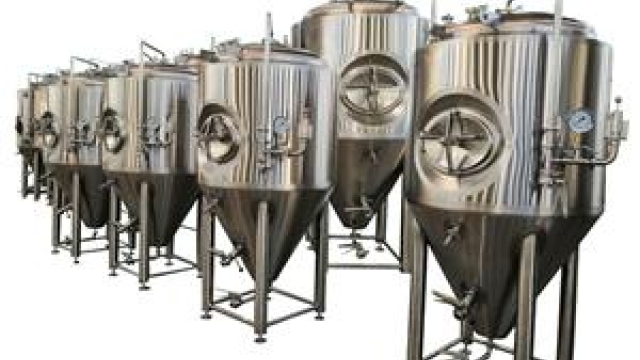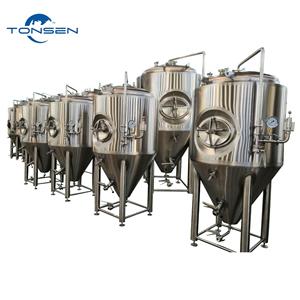
Brewing Brilliance: Unveiling the Secrets of Brewery Equipment
Step into the world of brewing brilliance with the integral components of a brewery: the equipment. Brewery equipment refers to the assortment of tools and machinery specially designed for crafting and manipulating the alchemy of beer. Whether you’re a brewing enthusiast looking to delve into this exciting world or a seasoned brewmaster seeking to expand your knowledge, understanding brewery equipment is essential for producing top-notch brews. In this comprehensive guide, we will unravel the mysteries and secrets behind brewery equipment, exploring its various types, functions, and importance in the process of creating exceptional beer. So, let’s embark on this enlightening journey as we unveil the wonders of brewery equipment!
Types of Brewery Equipment
Brewhouse Equipment
Brewhouse equipment is one of the most essential components of a brewery setup. It includes various tools and machinery that are used for the brewing process. Brewhouse equipment typically comprises a mash tun, brew kettle, lauter tun, and whirlpool. The mash tun is where grains are mixed with hot water to extract the sugars needed for fermentation. The brew kettle is used for boiling the wort, a mixture of malted grains and water. The lauter tun is utilized to separate the spent grain from the liquid, while the whirlpool assists in settling out unwanted particles before transferring the wort for fermentation.
Fermentation Equipment

Fermentation equipment plays a crucial role in transforming the wort into beer. It involves vessels and accessories designed to provide an ideal environment for yeast to convert sugars into alcohol and carbon dioxide. The primary fermentation vessel, often called a fermenter or a fermenting vessel, is where the wort is exposed to yeast for fermentation. Classified as either a conical or cylindroconical fermenter, it allows for the easy separation of sediment and facilitates the collection of yeast for reusing in future batches. Additionally, airlocks, temperature controllers, and monitoring systems are among the essential accessories used in the fermentation process.
Packaging Equipment
Packaging equipment is utilized in the final stages of beer production, ensuring that it is correctly bottled, canned, or kegged for distribution. This equipment encompasses a variety of tools, including bottle fillers, canning machines, and kegging systems. Bottle fillers are used to fill beer bottles with the finished product, while canning machines perform a similar function for cans. Kegging systems, on the other hand, are employed for storing and dispensing beer in kegs. These packaging equipment options assist in maintaining the quality and carbonation of the beer during distribution and enhance the overall consumer experience.
Remember, this is only the first section of the article. Stay tuned for more insights into the world of brewery equipment in the upcoming sections.
Beer Equipment
Key Components of Brewery Equipment
In order to understand brewery equipment, it is essential to familiarize oneself with its key components. These components play a crucial role in the brewing process, ensuring the production of high-quality and consistent brews. Let’s take a closer look at some of the key components of brewery equipment.
Mash Tun: The mash tun is an integral part of any brewery. It is used for the mashing process, where crushed grains are mixed with hot water to facilitate enzyme activity and the conversion of starches into sugars. Typically made of stainless steel, the mash tun contains a false bottom or a manifold system that allows the separation of liquid wort from the spent grains.
Fermentation Vessels: Fermentation vessels, often referred to as fermenters, are containers designed for the primary fermentation of the beer. These vessels provide an optimal environment for yeast to convert sugars into alcohol, carbon dioxide, and various flavor compounds. They come in different shapes and sizes, ranging from cylindrical to conical, and are commonly made of stainless steel or food-grade plastic.
Bright Tanks: Bright tanks are used for the secondary fermentation and conditioning of beer. They are specially designed to store and carbonate the beer, allowing any remaining yeast and sediment to settle out. Bright tanks are equipped with temperature and pressure controls, ensuring the beer remains fresh and carbonated until it is ready for packaging or serving.
By understanding the key components of brewery equipment, brewers can optimize their brewing process and achieve consistent results. From the essential mash tun to fermentation vessels and bright tanks, each component plays a vital role in the creation of quality brews.
Choosing the Right Brewery Equipment
When it comes to setting up a successful brewery, selecting the right equipment is crucial. The brewery equipment you choose will directly impact the quality and efficiency of your brewing process. Here are a few key factors to consider when making your selection.
Firstly, think about the production capacity you aim to achieve. The size and scale of your brewery will determine the type and quantity of equipment you need. If you are starting small, a compact brewing system might be sufficient. Conversely, if you have ambitions for large-scale production, investing in more advanced and capable equipment will be necessary.
Secondly, consider the specific requirements of your brewing process. Different styles of beer may necessitate different equipment setups. For example, if you plan to brew a wide variety of styles that require precise temperature control, you will need equipment that offers advanced temperature regulation features. Additionally, consider the flexibility and versatility of the equipment to accommodate any future brewing experiments or innovations.
Lastly, keep your budget in mind. Brewery equipment can vary greatly in cost, so it’s essential to set a realistic budget and stick to it. Determine the key pieces of equipment you need to start your brewing operations and prioritize your spending accordingly. While it’s tempting to splurge on top-of-the-line gear, a budget-friendly approach can still yield excellent results when you make well-informed decisions.
In conclusion, selecting the right brewery equipment entails considering the production capacity, specific requirements of your brewing process, and your budget limitations. By thoroughly assessing these factors, you can choose equipment that not only meets your brewing needs but also sets the foundation for a successful and efficient brewery.



